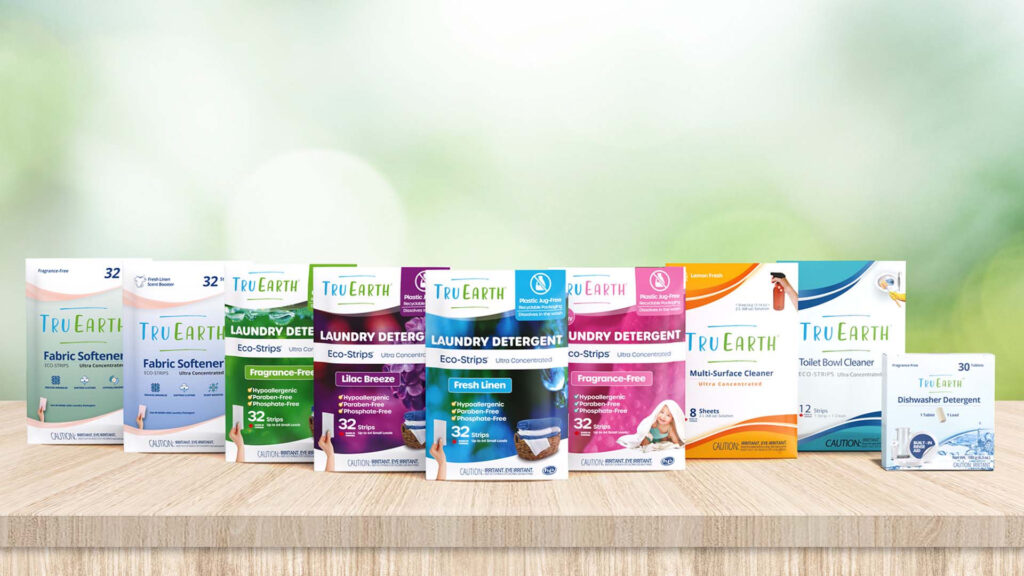Creating and Scaling a Giving Program That Promotes Sustainability
Climate change is a reality that requires action from many angles, and it has a disproportionate impact on marginalized communities. Kate Walker, Head of ESG at Tru Earth, discusses what it has taken for Tru Earth to launch their initiative that addresses environmental and economic justice by narrowing inequities; all while promoting practices that are good for the planet.
Coming off the hottest August on record, it is not at all an exaggeration to say that climate change is here and being felt all around us. While the climate emergency is a threat to all life, it has a disproportionate effect on the people and places least responsible for creating it, in particular low-income communities, indigenous populations, and underserviced communities across the globe.
“Organizations working on climate have a responsibility to address these fundamental inequities head-on, whether through philanthropy, social innovation, or other citizenship efforts. After all, there cannot be climate justice without economic justice”
Kate Walker
Over the last few years, I have worked with Tru Earth, a B Corp-certified household cleaning products organization headquartered in the US and Canada, to develop a comprehensive giving program that does just that: narrowing inequities while promoting practices that are good for the planet. At the height of COVID-19, we began donating our cleaning products to food banks in our own backyard in Vancouver. What began as a small-but-mighty community response has since grown into a robust operation reaching more than 1,000 food banks, shelters, and other organizations fighting poverty. To date, we have coordinated the donation of 36 million laundry eco-strips—$19.2 million in product—to individuals across North America and around the world.

What does it take to create a donation program of this scale and focus? For one thing—more than good intentions! Leaders must effectively pool their resources, listen to experts on the ground, and admittedly, engage in a fair amount of trial-and-error. In this article, I hope to arm organizations looking to make a difference with key insights—surprises, challenges, and guidance—I have gathered in developing a philanthropic program driven by sustainability and equity.
Identifying and reaching the right charitable partners can be challenging, but it is critical for making an impact.
When we first started, we struggled to identify the correct partners. Who could distribute the product quickly and to quality hands while reaching a large network? Eventually, we sought partners with far-reaching networks, like Feeding America and Food Banks Canada, that could help us give as efficiently as possible. We were surprised at how difficult it was to engage these partners. It took nearly two years to start meaningful conversations that would lead to action. Many organizations were in disbelief that we wanted to donate product in the first place and at the quantity we wanted to donate.
Now, three years into the program, we are inundated with requests, receiving 30-40 inquiries a month from organizations in need.
Environmental products are rarely donated.
I was surprised to find that cleaning supplies are almost never donated to organizations serving their communities. After all, families who visit food banks need more than food. Most of the organizations we talked to typically buy these products from local dollar stores and noted that they rarely purchased environmental products because of the typically high cost. This is an opportunity for companies that produce earth-friendly goods. People of all incomes and backgrounds are equally deserving of household goods that don’t contain ingredients that are bad for people or the planet.
“Families who visit food banks need more than food”
Kate Walker
Every community—and organization—has different needs.
If you forge meaningful partnerships with people working on-the-ground to solve pressing issues, you can better see how your organization can plug in. Dedicating time to understanding the needs of organizations and the communities they service can go a long way in developing trust.
We realized quickly that an important issue to consider when donating product was how much space it takes up. Our eco-strip works well as a donated product for food banks because a year’s supply can easily fit on a shelf and it’s easy for individuals in need to store, carry, and use.

Scaling your program is an ongoing challenge.
For a long time, I was the only person managing requests, building partnerships with national organizations, sending orders, tracking orders, and so on. As Tru Earth grew as a company, we knew we needed to grow as a social good program. Doing this work alone was unsustainable. We hired a coordinator so that we could sustain and grow.
Tracking and validating your program helps you stay accountable.
We built an entirely new tracking system for this program and spent months manipulating a CRM program to be used for this purpose. It was well worth it: We can pull data we never imagined, down to the exact number of eco-strips donated in a country, city, or individual organization. This not only helps with our internal reporting but gathering meaningful reports for internal & external stakeholders. Additionally, this reporting helped us score almost perfectly on the B Corp – B Impact assessment as we were able to pull multiple reports to verify the legitimacy of the giving program.














